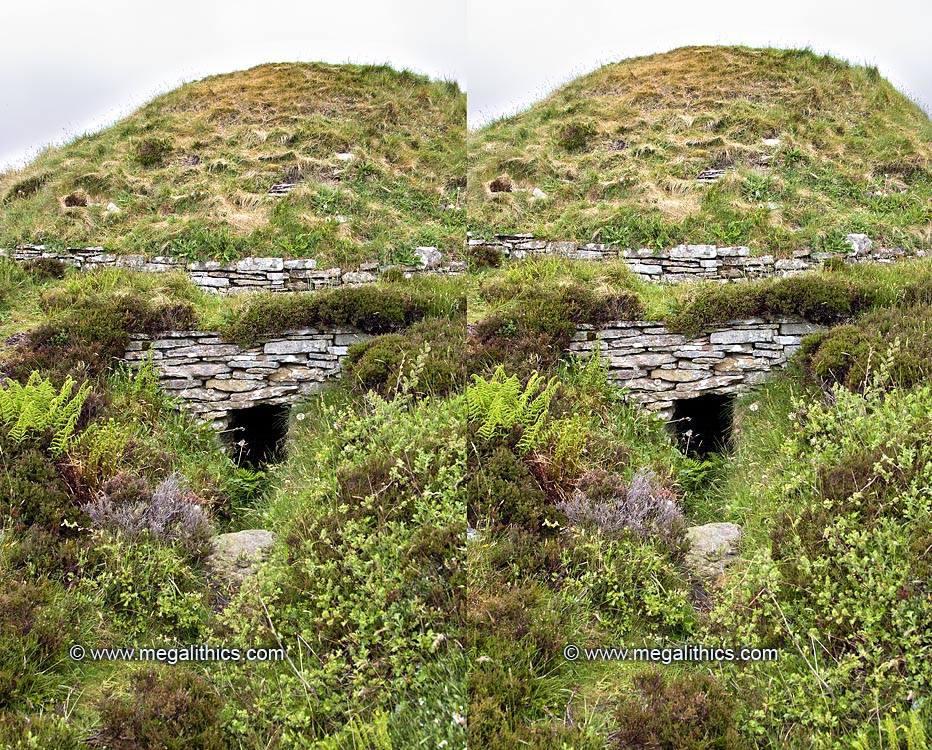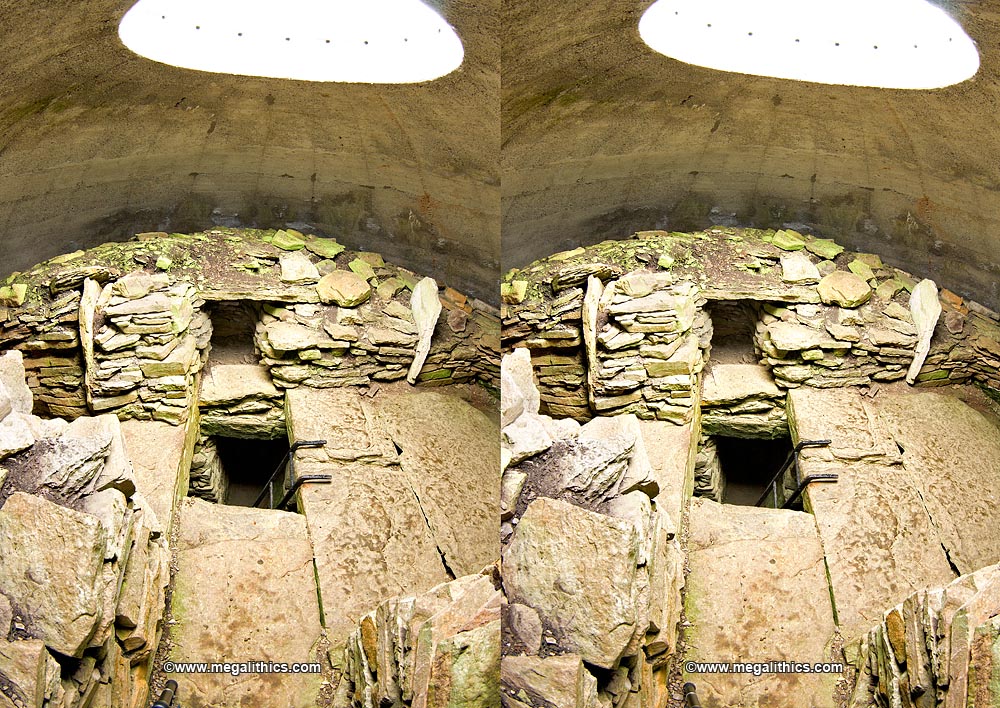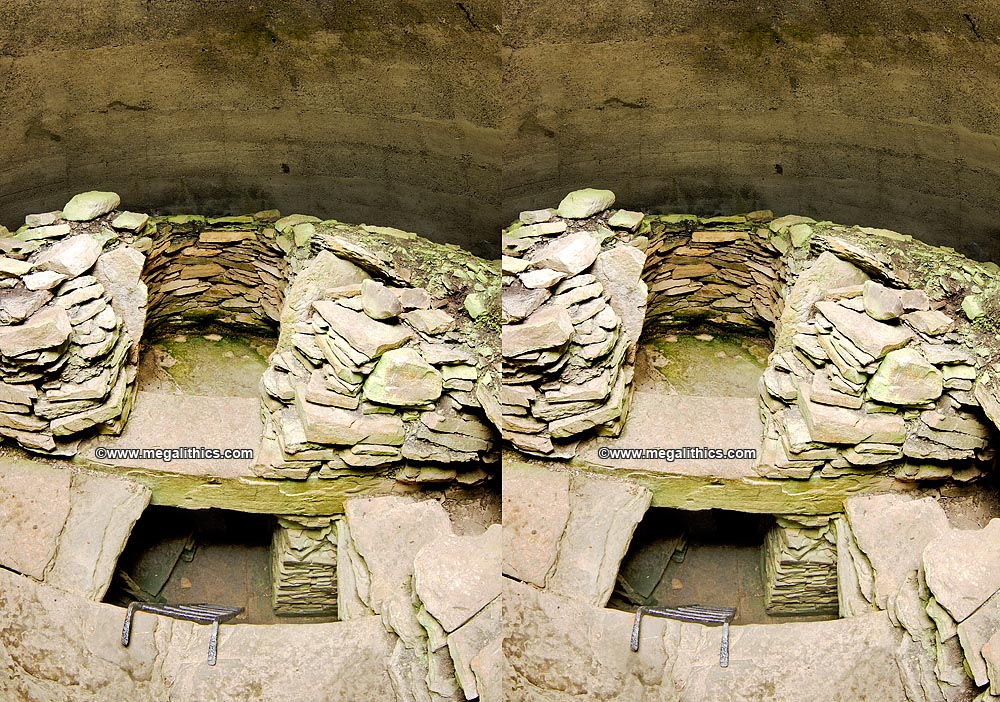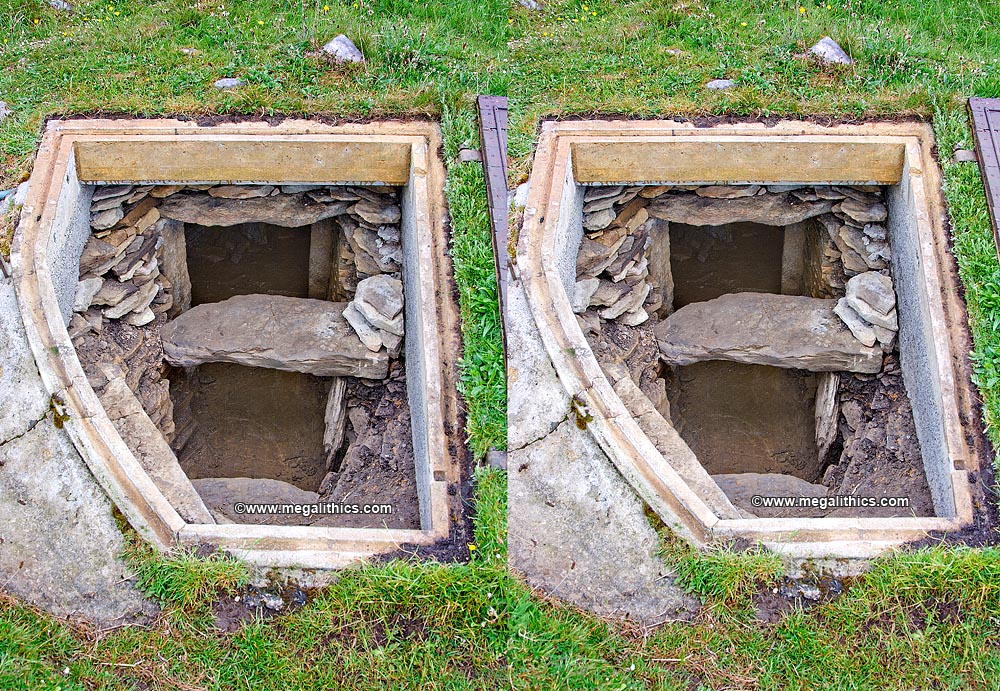
The 3D views below are stereo pairs
adjusted for crossed eye viewing.
These can be viewed with the naked eye, but as with our parallel viewing, the
technique takes a little getting used to.
If you have not viewed images like this
before, or are having trouble seeing in 3D,
consult our 3D Viewing Help Page for tricks, tips and information.

The entrance passage to the lower chamber.
This stereogram neatly illustrates the projection of the stone walled passage
past the retaining wall of the main cairn.
Also just visible in the vegetation in front of the passage entrance is one of
the lintel stones of the strange drain-like
external extension of the passage.

The upper chamber viewed from the end of
the entrance passage.
All three cells of the upper chamber are visible in the photo, the east cell
(left), the southern cell (centre) and the west cell (right).
The inner opening of the lower chamber entrance passage can be seen through the
access hole in the broken central lintel.

The east cell of the upper chamber.
In the foreground can be seen the central lintel found broken by Burroughs, the
remaining south end of this floors part of the southern cell (right)
and the northern section floors a good part of the entrance passage. Note how
the inner eastern lintel which provides the floor of the short passage
element of the east cell is higher than the outer eastern lintel used to floor
the cell itself, originally the interior was built up with a layer of clay to
match
the levels. In the lower chamber the start of the entrance passage is visible to
the right and the bench of the eastern cell on the north wall is visible left.

The entrance to the miniature subsidiary
chamber.
This stereogram illustrates the difference in height between the lintel set
across the entrance and the those of the main chamber. The slab supporting
the lintel on the right is clearly visible as are two of the vertical
slabs set into the walling of the main chamber.